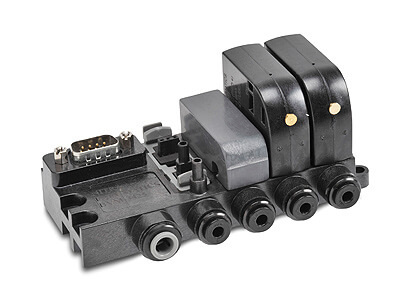 Cookies are not enabled on your browser.
Cookies are not enabled on your browser.Cookies are required for our site. Please enable cookies in your browser preferences to continue.
- Barcode / RFID / Vision
- Bulk Wire & Cable
- Cables (Terminated)
- Circuit Protection / Fuses / Disconnects
- Communications
- Drives & Soft Starters
- Enclosure Thermal Management & Lights
- Enclosures & Racks
- Field I/O
- HMI (Human Machine Interface)
- Hydraulic Components
- Motion Control
- Motor Controls
- Motors
- Pneumatic Components
- Power Products (Electrical)
- Power Transmission (Mechanical)
- Process Control & Measurement
- Programmable Controllers
- Pushbuttons / Switches / Indicators
- Relays / Timers
- Safety
- Sensors / Encoders
- Stacklights
- Structural Frames / Rails
- Tools & Test Equipment
- Valves
- Water (Potable) Components
- Wiring Solutions
- Retired Products
- Programmable Logic Controllers
- Productivity1000 PLCs
- Productivity2000 PLCs
- Productivity3000 PLCs
- ProductivityCODESYS
- LS Electric XGB Series PLCs
- ProductivityOpen
- CLICK PLCs
-
Do-more H2 PLCs or
Do-more T1H Series - Do-more BRX PLCs
- C-more Touch Panels
- AC & DC Drives
- Motion Control Components
- Servos
- StrideLinx
- Pneumatics
Configuration Utilities
- PLC Family Selector
- P1000 PLC Systems
- P2000 PLC Systems
- P3000 PLC Systems
- ProductivityCODESYS
- CLICK PLC Systems
- Do-more® BRX PLC Systems
- LS-Electric® XGB PLC Systems
- Productivity®Open Systems
- AC Motors
- Datalogic® Safety Light Curtains
- LS-Electric® Servo Systems
- Nitra® Pneumatic Grippers
- Object Detection (Sensors)
- PAL Controller Configurator
- Precision Gearbox Selector
- Protos X® Field I/O
- Quadritalia® Modular Enclosures
- Stellar® Soft Starters
- Stepper System Selector
- SureFrame T-slot Extrusion
- SureMotion® XYZ Gantry
- SureServo2® System Selector
- SureStep® Linear Actuators
- Timing Belts & Pulleys
- Werma® Stacklights
- ZIPLinks
Valve- FAQ
Q: What is SCFM?
A: SCFM stands for Standard Cubic Feet per Minute. The term "Standard" refers to air at standard atmosphere (at sea level or 14.7 PSI) and temperature (70 degrees F). See the formula and chart below to understand the relationship between SCFM and Cv. A Standard Cubic Foot (SCF) of air is the mass of air that would fill a cubic foot at standard temperature and pressure conditions. Depending upon the actual temperature and pressure, one SCF of air may occupy significantly more or less volume than a cubic foot. SCFM is the flow of one SCF per minute, which may or may not be the actual volumetric flow rate.
Q: What is ACFM?
A: ACFM stands for Actual Cubic Feet per Minute. It is a unit of volumetric capacity, referring to the actual gas flow with reference to inlet conditions. Since the volumetric capacity refers to the volume of air or other gas at the inlet to the unit, it is sometimes referred to as "inlet cubic feet per minute" (ICFM).
Q: What is Cv?
A: CV is the Valve Coefficient. Cv values are used to compare valves; a valve with a higher Cv allows more air flow under the same operating conditions. The relationship between Cv add SCFM (Standard Cubic Feet per Minute): Cv represents the amount of flow at all pressures, while SCFM represents the flow rate at a particular air pressure. Use the following equation and Conversion Factor chart to relate Cv to SCFM
| SCFM = | Cv |
| Conversion Factor |
| Cv to SCFM Conversion Factor | |||||||
|---|---|---|---|---|---|---|---|
| PSI of Air Pressure | 40 | 50 | 60 | 70 | 80 | 90 | 100 |
| Conversion Factor | 0.0370 | 0.0312 | 0.0270 | 0.0238 | 0.0212 | 0.0192 | 0.0177 |
Please know that such a SCFM value would represent the flow of a valve (of the given Cv) that is open to atmosphere for a full minute. In practice, valves usually operate cylinders, or other pneumatic devices, and typically they cycle on/off at some rate. Visit our Air Consumption page to calculate SCFM for cylinders (and tubing) at a given pressure and duty cycle.
Q: How can I reduce plumbing complexity and simplify trouble shooting when my application needs multiple valves?
A: Use stacking valves such as the Nitra AVP or CMV series valves, or use a manifold with valves such as the AVS or BVS series. Stacking valves and manifolds allow the use of a shared air supply, exhaust, and centralized/multiplexed control signals. Learn more about our directional control solenoid valves.
The BVM manifold with multiple BVS valves (shown at right) (shown below) , allows the use of a single air supply line AND a single 9-pin D-sub cable interface to control all the valves.

Q: What are the advantages of air pilot actuation versus electric solenoids?
A: Solenoid actuation requires electrical switching, wiring, and shielding to operate the valve. With an air pilot valve there is no potential for sparks, and thus less risk of explosion, AND the components are typically less expensive.
Q: Why use a 'detented' valve?
Q: Why use a 'detented' valve?
A: Detented valve are useful when the valve needs a mechanical means to hold position. This might be needed for safety purposes, or in the case of a three position valve to locate the center position. It is usually achieved with a spring, ball or cam mechanism.

Circuit symbol for a
detented valve actuator
(More about circuit symbols)
Q: What are the advantages of Air vs Solenoid Actuation?
A: Solenoids require the presence of electric signals, wire, and switches, along with shielding and safety considerations to reduce spark hazards and personnel risks.
Air ported valves only require extra tubing/plumbing and a separate pilot valve, and they eliminate the risk of explosion, spark, and shock. These components may also be less expensive. Air actuated valves (in hazardous locations) are sometimes controlled by solenoid style valves which are located away from the hazardous area.
Q: What is the difference between Normally Open and Normally Closed valves?
A: As the name suggests, Normally Open valves allow air to pass when they are not energized (or actuated). Normally Closed valves must be actuated to allow air to pass.
Q: What is Compression Factor?
A: Compression factor refers to the ratio of compressed air to uncompressed air. Uncompressed air at sea level and 70 degrees F is 1 Atmosphere, or 14.7 PSI. If you are operating other that at sea level or 70 degrees F, you may need to adjust the 14.7psi constant. For example: to determine ratio of compressed air at 80 PSI to "free"; uncompressed air (at standard atmospheric pressure):
| 80 PSI + 14.7 PSI | = 6.44 (times air is compressed when at 80 PSI) |
| 14.7 PSI |
Q: What is Pressure Drop?
A: When a control valve opens and air begins to move, there is always an associated pressure drop. After sufficient time passes, the system approaches equilibrium again and the pressure usually builds back to the original inlet pressure. The following formula shows the relationship between pressure drop, Cv and other factors associated with actuator movement. Visit this page for an interactive version of this formula.

Where:
- b = bore (inch)
- s = stroke (inch)
- Pi = Inlet pressure (psig)
- Pa = Atmospheric pressure (std is 14.7 psi)
- ΔP = pressure drop (psi)
- T = temperature (°F)
- t = stroke time (sec)
Check out our job openings
Free Online PLC Training
FREE Video Tutorials
FREE e-Newsletter
Automation Notebook
Product Literature
White Papers
News, Product and Training Bulletins
E-Books
 Safe &
Secure
Safe &
Secure

We accept VISA, MasterCard, Discover, American Express, PayPal or company purchase orders.
Voted #1 mid-sized employer in Atlanta
Check out our
job openings






